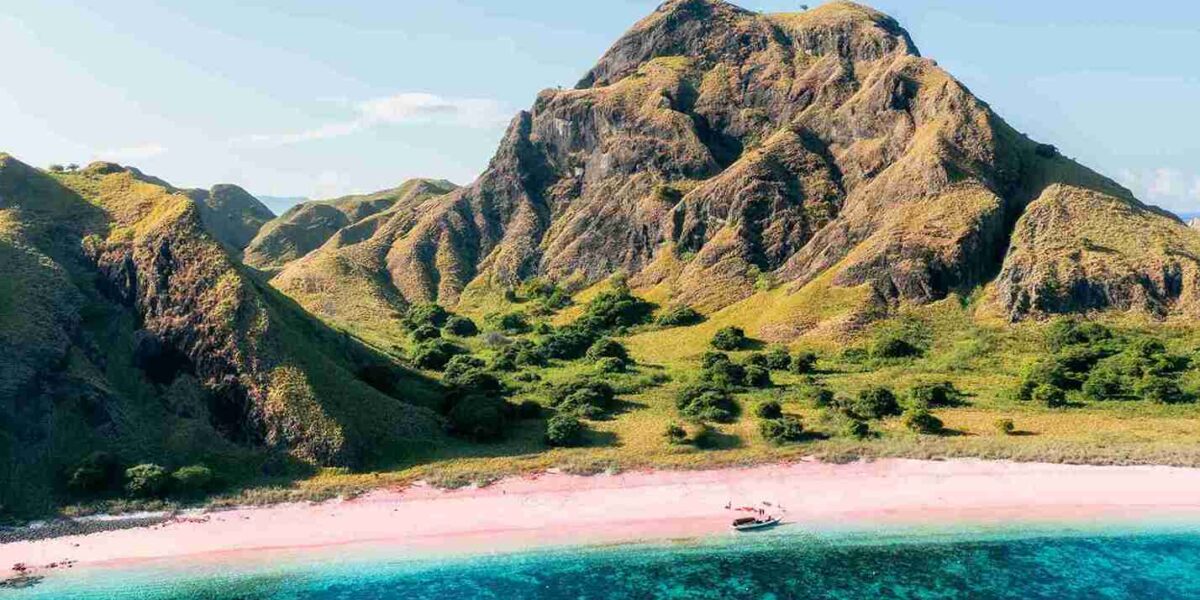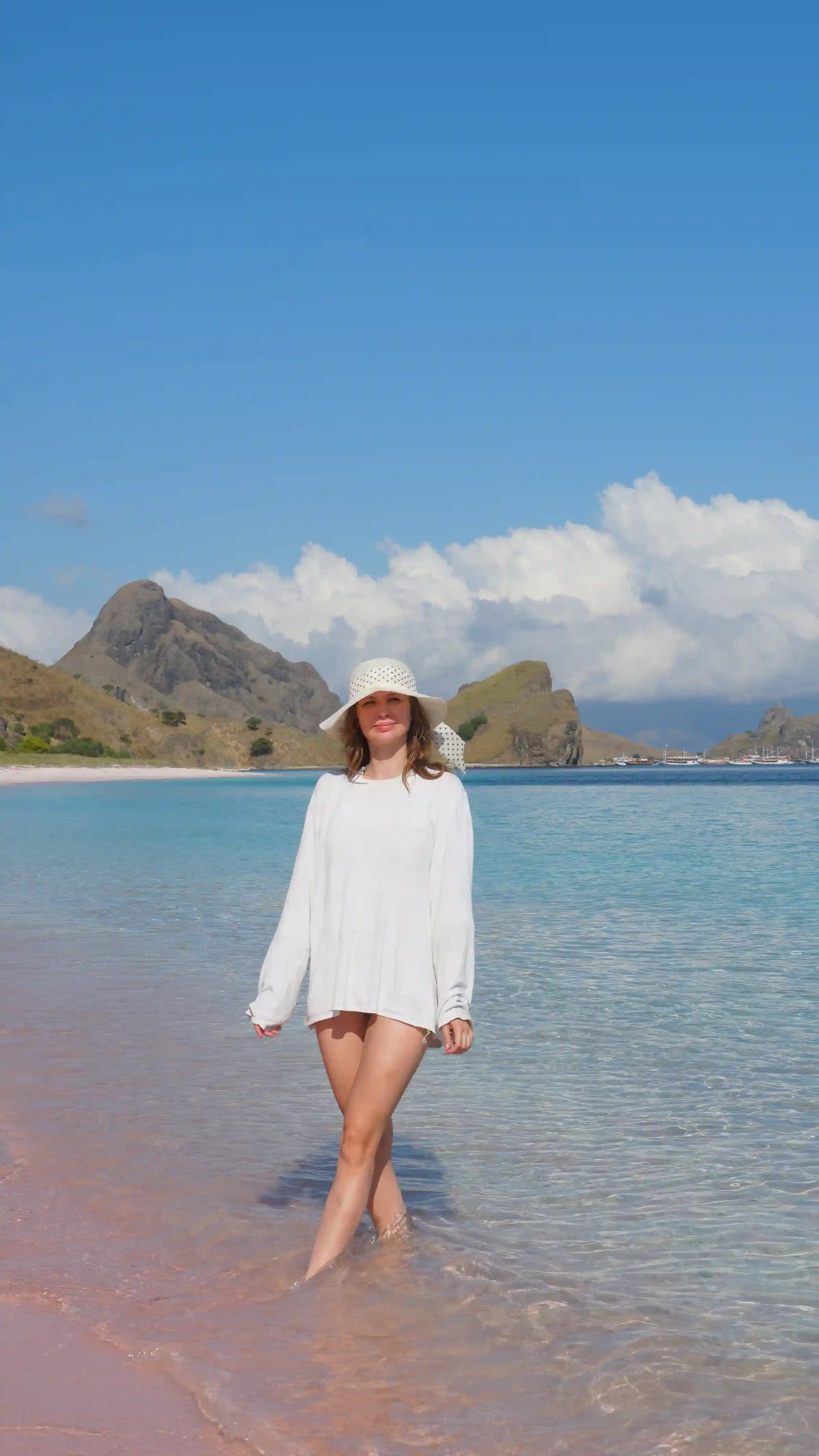Komodo dragons (Varanus komodoensis) and Black Mambas (Dendroaspis polylepis) are both scary. Despite living in different parts of the world, people can’t help but wonder what would happen if these top predators ever met. Komodo dragons live in a group of islands in eastern Indonesia, while Black Mambas roam the dry savannas of sub-Saharan Africa. Each one rules their own kingdom.
Let’s get into these creatures: size, physical traits, how they hunt, and the adaptations that make them so good at survival. From the chunky Komodo dragon with bacteria-laced saliva to the lightning fast Black Mamba with a neurotoxin, you’ll see just how deadly they are. We’ll then imagine a “battle” between the two and finish up with some tips on how to see Komodo dragons in person.
Komodo Dragon: The King of Komodo Island

Before we get into the details, it’s good to know that the deadly Komodo dragon is an Indonesian wonder found only in Indonesia—specifically on Komodo, Rinca, Flores, Gili Dasami and Gili Motang. Being the largest lizard in the world has made these reptiles a big tourist draw for local and international visitors.
Background and Habitat
Komodo dragons were first discovered by scientists in the early 1900s. They live in the dry and hilly landscape of the Komodo Islands where the scenery is a mix of savanna-like grasslands and mangrove forests. To protect their population, the Indonesian government created Komodo National Park which is also a UNESCO World Heritage Site.
Physical Characteristics of the Largest Lizard
Komodo dragons can grow longer than 3 meters (over 9 feet) and weigh around 70 kilograms (over 150 pounds) and sometimes more. They have a chunky build with a long tail. Their skin is thick and scaly and grayish brown in color that blends with the rocky and dusty surroundings. Their teeth are serrated and curved and their mouth is full of bacteria. A single bite can cause deep wounds and serious infection to their prey.
Diet and Hunting Style
Komodo dragons are meat-eaters and hunt larger game like deer, buffalo, wild boar and even scavenge carcasses. Although they seem slow, they can run fast—up to 20 km/h (12 mph)—for short distances when chasing prey. Their usual hunting style is to hide and ambush. Once they bite, the bacteria-laced saliva weakens the prey over time and the Komodo dragon follows until the victim can no longer fight back. They can also catch and eat large snakes, which proves their supremacy in their domain.
Survival Techniques
In a showdown, Komodo dragons rely on their sharp claws, strong jaws and muscular tail. Their long forked tongue helps them detect the scent of blood from afar. They also thrive in dry environment: they don’t need lots of water and can survive in areas with limited food. All these traits have kept them on top of their island food chain.
Black Mamba: The Venomous Menace of Africa

Besides the King Cobra, the Black Mamba is a highly venomous snake and one of the deadliest and can give people nightmares across Africa. The nickname “Black Mamba” is from the inky color inside their mouth and not from their outer skin. These snakes can grow up to 2.5 to 4.5 meters (8 to 15 feet) in length making them the longest venomous snake in Africa.
Background and Habitat
Black Mambas are found all over sub-Saharan Africa, they prefer dry savannas, rocky hills and scrubland. Their extremely potent neurotoxic venom can kill in hours if no medical help is given that’s why local communities are always on alert. But Black Mambas usually avoid people if they can and will escape conflict whenever possible.
Physical Characteristics
The Black Mamba has a slender body that can range in color from gray, olive to dark brown. Their mouth is entirely black inside which is a sight to behold when they feel cornered. When in self-defense mode a Black Mamba can raise the front part of their body, open that black mouth wide and hiss loudly as a warning, to let you know how dangerous they can be. This threat display is to deter threats by showing them the black inside of their mouth.
Diet and Hunting Style
Black Mambas hunt rodents like rats, rabbits, squirrels, birds and small reptiles. They can run up to 20 km/h on flat ground and inject a neurotoxin that disrupts nerve signals causing quick paralysis. Since they strike fast and without warning, they rarely give their prey a chance to escape. This hunting style makes Black Mambas very good at catching smaller animals.
Survival Techniques
When threatened Black Mambas can be aggressive but they usually prefer to flee to a safe hide. Their speed and lethal venom gives them an edge in the African wild. They often slip under rocks or into burrows to keep cool in hot climate and to avoid bigger predators.
Comparing Komodo Dragon vs Black Mamba

Below is a brief table that highlights some of the main differences between Komodo Dragons and Black Mambas:
| Aspect | Komodo dragon | Black Mamba |
| Size and Weight | Typically 2–3 meters, up to 70 kg or more | Around 2.5–4.5 meters, weighing roughly 2–3 kg |
| Habitat and Range | Komodo, Rinca, Flores, Gili Dasami, Gili Motang in Indonesia | Sub-Saharan Africa (savannas, scrubland, open woodlands) |
| Hunting Style | Strong jaws with bacteria-laden saliva | Neurotoxic venom injected into the prey’s nervous system |
| Defense Mechanism | Powerful tail, sharp claws, and infectious bite | Potent neurotoxin capable of killing within hours |
| Speed | Up to 20 km/h for short bursts | Up to 20 km/h with quick, agile movement |
| Diet | Carnivorous: deer, buffalo, wild boar, carrion | Carnivorous: rodents, birds, smaller reptiles |
| Lifespan | About 30 years in the wild | Around 11 years in the wild |
| Conservation Status | Listed as Vulnerable by the IUCN | Not officially endangered, but numbers declining in some regions |
In a hypothetical encounter the outcome would depend on who bites first.
Physical Differences
Komodo dragons are bigger, often over 70 kg and 3 meters long. Black Mambas can grow longer, up to 4.5 meters but are lighter, usually only a few kg and can move very agile. Komodo dragons have rough thick scales, Black Mambas have smoother scales in gray, olive or dark brown.
Diet and Hunting
Komodo dragons use their bite, which contains bacteria that slowly kills their prey. They can swallow big chunks of meat with their wide mouth and lots of saliva. Black Mambas use fast strike, inject neurotoxin that can shut down the prey’s nervous system, causing almost instant paralysis. That makes them very good at catching smaller animals. Komodo dragons also interact with venomous snakes which can affect their fighting ability and ecological role.
Defense
In a one on one fight, Komodo dragons use their strong jaws, claws and thick tail with that toxic saliva to defend themselves. Their size often deters predators. Black Mambas use speed and very venomous bite. They can lift a third of their body off the ground and strike multiple times in a short span of time. Their venom can cause respiratory and cardiovascular failure if not treated quickly.
Habitat and Distribution
Komodo dragons are found in a few Indonesian islands, mostly in Komodo National Park. Their range is small and they face habitat changes or human activities. Black Mambas are found across a bigger part of Africa. Although their territory is bigger, they are also affected by habitat fragmentation and poaching. They are not endangered in the IUCN list but numbers are declining in some areas. Komodo dragons interact with many other animals in their habitat, showing complex ecological relationship.
Survival Adaptations
Komodo dragons can survive dry conditions by conserving energy and going days without food because of their big body mass and top of the food chain status. Black Mambas survive through speed, deadly venom and ability to hide in small spaces. They slip between rocks or into burrows to manage the hot African climate and bigger predators. King cobras rely on their deadly venom, speed and ambush tactics, different from Komodo dragons.
Read more: Komodo Dragon vs King Cobra: Battle of Deadly Predators
Komodo Dragon vs Black Mamba: Who wins?

A Komodo dragon vs Black Mamba sounds exciting. With its size, the Komodo dragon has the advantage in brute force. A single bite from its jaws can cause massive damage and blood loss, and with all those bacteria, if the Black Mamba can’t dodge fast enough the Komodo dragon can grab and deliver the fatal blow.
But the Black Mamba is not helpless. Its light body can dodge multiple strikes from the Komodo dragon. With one or two good bites, its neurotoxic venom can slowly shut down the Komodo dragon’s nervous system, depending on where it bites and how much venom is injected. If the snake can bite multiple times without getting caught, even the big Komodo dragon can fall.
In the end it all boils down to who gets the first decisive strike. A successful grab by the Komodo dragon means quick death for the snake but the Black Mamba’s venom is no joke if it strikes first.
Want to see Komodo Dragons in the wild?

Seeing a Komodo dragon up close in the wild is a once in a lifetime experience. You can go to Komodo National Park which includes Komodo Island, Rinca and nearby islands. There you will see a dry savanna and crystal clear waters with coral reefs. You can join a guided trek with a park ranger to get a safe but close look at the Komodo dragons. Make sure to follow every advice from your guide you don’t want to mess with these big lizards.
Aside from meeting the Komodos, you can try snorkeling or diving around the park. This area is famous worldwide for its rich marine life, manta rays, reef sharks, sea turtles and many other sea creatures. Komodo National Park is a top dive spot in Indonesia among scuba enthusiasts.
Luxury Komodo Tour Recommendations
For those who want to explore Komodo National Park in style, there are tour operators that offer exclusive boat trips with 5 star amenities. Komodo Tour by Komodo Luxury offers air-conditioned cabins, cozy lounges with ocean views and local or international cuisine. With professional guides, you’ll trek to places where you can see Komodo dragons up close, swim in pink sand beaches and watch the sunset from the ship’s deck.

Safety is top priority on these tours. You will receive a briefing on how to behave around Komodo dragons before you start and the boat is equipped with safety gear. After a long day you can rest on board and get ready for more adventure the next morning.
Want to see Komodo dragons up close? Book with Komodo Luxury and experience an unforgettable journey around Komodo National Park!
Conclusion

Both Komodo dragon and Black Mamba are reptilian icons. Each has its own strengths and traits that makes them deadly. The Komodo dragon is big, with sharp teeth and saliva full of bacteria, the Black Mamba is fast and neurotoxic. Both are adapted to dry land: one lives in remote islands of eastern Indonesia, the other roams the savannas of Africa.
If they ever meet, the outcome will depend on who strikes first. But these two predators live in different regions, each is vital to the balance of their own ecosystem. If you want to see Komodo dragons up close, a trip to Komodo National Park is the way to do it. And if you want the premium experience, try a luxury tour that combines wildlife sightings with 5 star amenities.
Ready to book? Don’t wait to see these giants for yourself. Book with Komodo Tour by Komodo Luxury and start your adventure now!






















